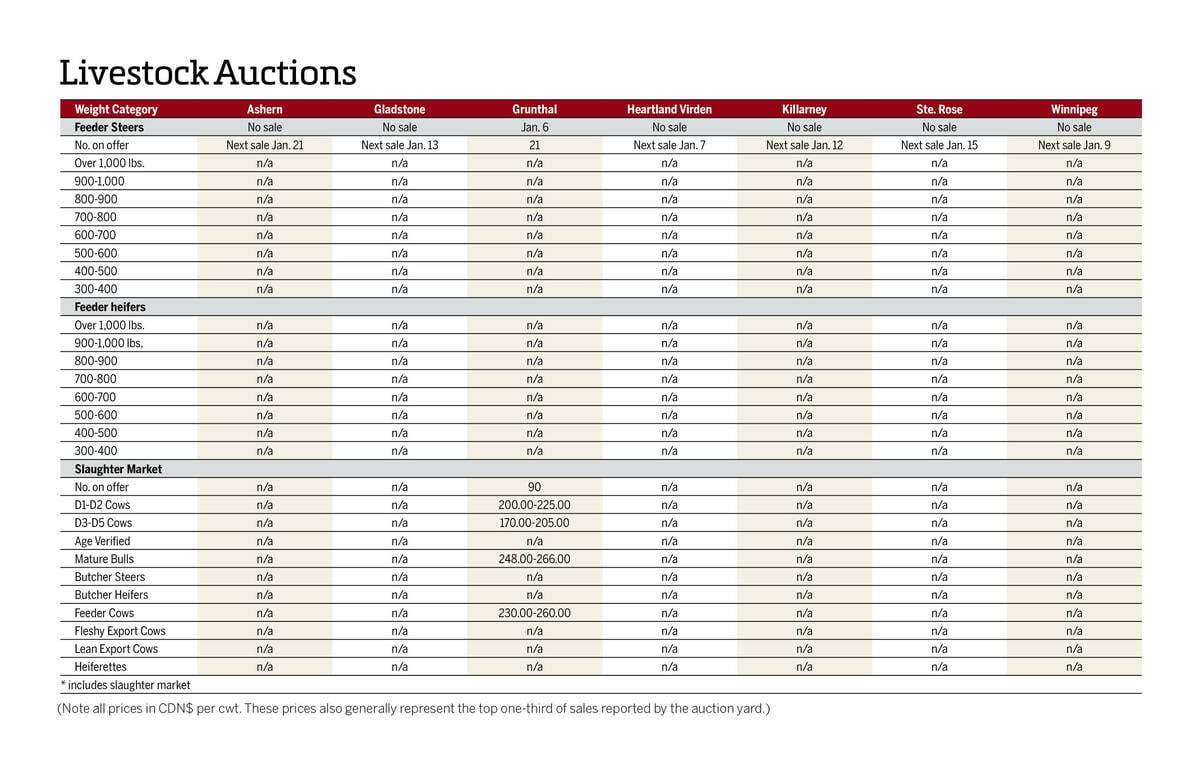ICE Futures Canada canola contracts bounced up and down within a relatively narrow range during the week ended May 14, but finished right around where they started as the uncertainty of this year’s North American crop kept some caution in the market.
After waiting for a spring rally that never came, attention must now turn to the summer growing season if there’s to be any bullish spark for futures. Mounting dryness concerns in parts of the Prairies could provide that catalyst, but with timely rains and great U.S. production prospects, there are more reasons for canola to turn lower than to break higher at present.
Read Also

Manitoba cattle prices Jan. 6
Grunthal was the first Manitoba livestock auction mart to kick off 2026 cattle sales in early January.
Looking at a chart, old-crop July canola has generally held within a $10 range from $450 to $460 per tonne for the past three months, with any breaks outside of that range proving to be short lived. New-crop November is in a similar situation, having hovered around the $450-per- tonne level since early March.
In the U.S., soybeans moved lower during the week, while corn and wheat both moved higher.
The U.S. Department of Agriculture released its much-anticipated monthly supply/demand report on May 12, with the May data including the first official production estimates from the government agency for the 2015-16 crop.
U.S. soybean production is forecast at 3.85 billion bushels for 2015-16, which came in slightly ahead of trade estimates. The bigger crop also meant U.S. ending stocks were above trade guesses, at 500 million bushels. That compares with an expected carryout for the current crop year of only 350 million.
Large crop prospects in South America also led to larger-than-expected world stockpiles for 2015-16. USDA pegged 2015-16 world ending soybean supplies at 96.2 million tonnes, above expectations of 95 million. World soybean ending stocks for 2014-15 are expected to come in at 85.5 million tonnes.
The government agency estimated an average soybean yield of 46 bushels an acre for the 2015 U.S. crop, which could be bearish for the soybean market if it’s realized.
With the big crop prospects, any rallies through the growing season will be seen as good selling opportunities.
For corn, the U.S. crop is forecast at 13.6 billion bushels this year, which would be off the 14.2 billion bushels grown in 2014 but still above trade guesses and bearish for prices overall.
USDA also pegged global ending stocks for the current crop year, and next, at larger-than-expected figures, though U.S. stockpiles were generally in line with expectations.
Wheat did manage to see a corrective bounce off of nearby lows during the week, with concerns over cold temperatures in some winter wheat-growing regions of the U.S. providing support.
However, most of the fundamental news remains bearish for wheat, and the staying power of any move higher is questionable.
Both U.S. and world wheat ending stocks forecasts beat expectations in the USDA report. World stockpiles are forecast at 201 million tonnes at the end of 2014-15, and 203.3 million for 2015-16.
















